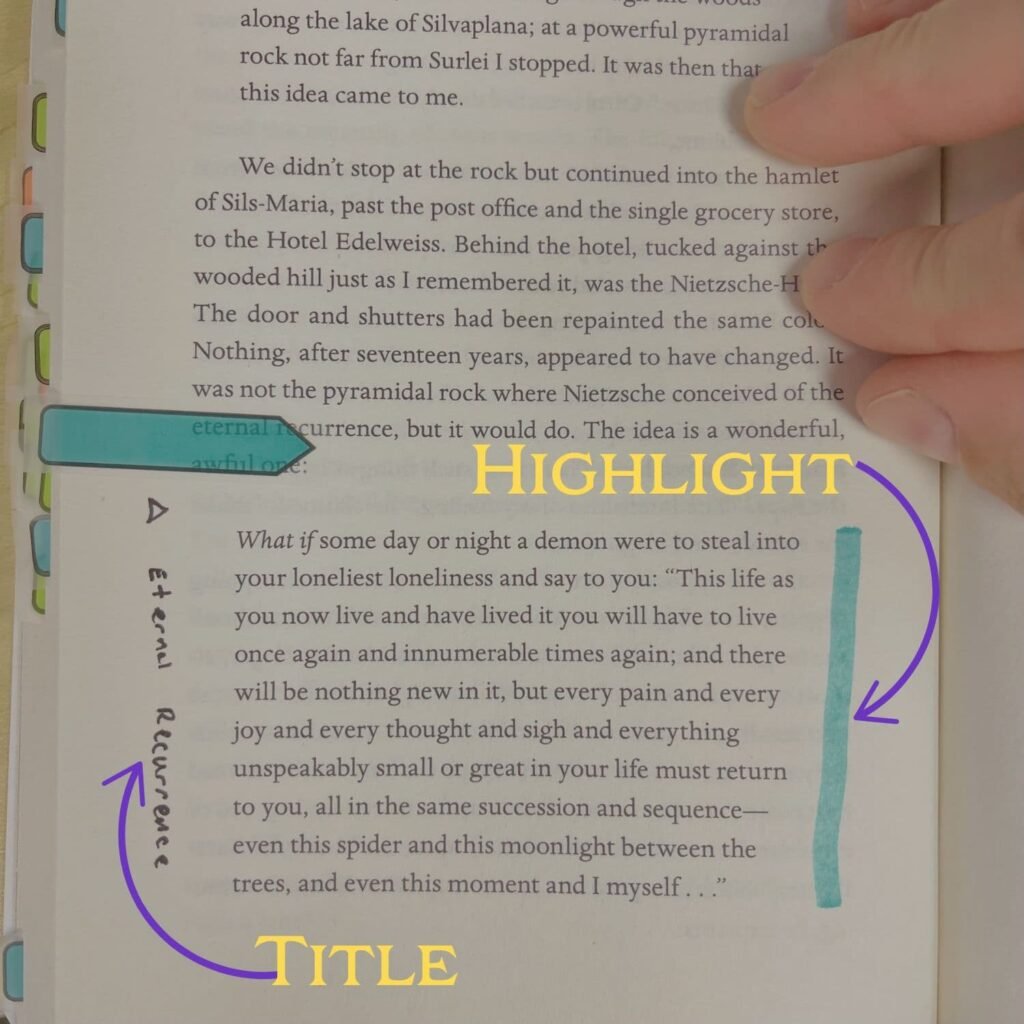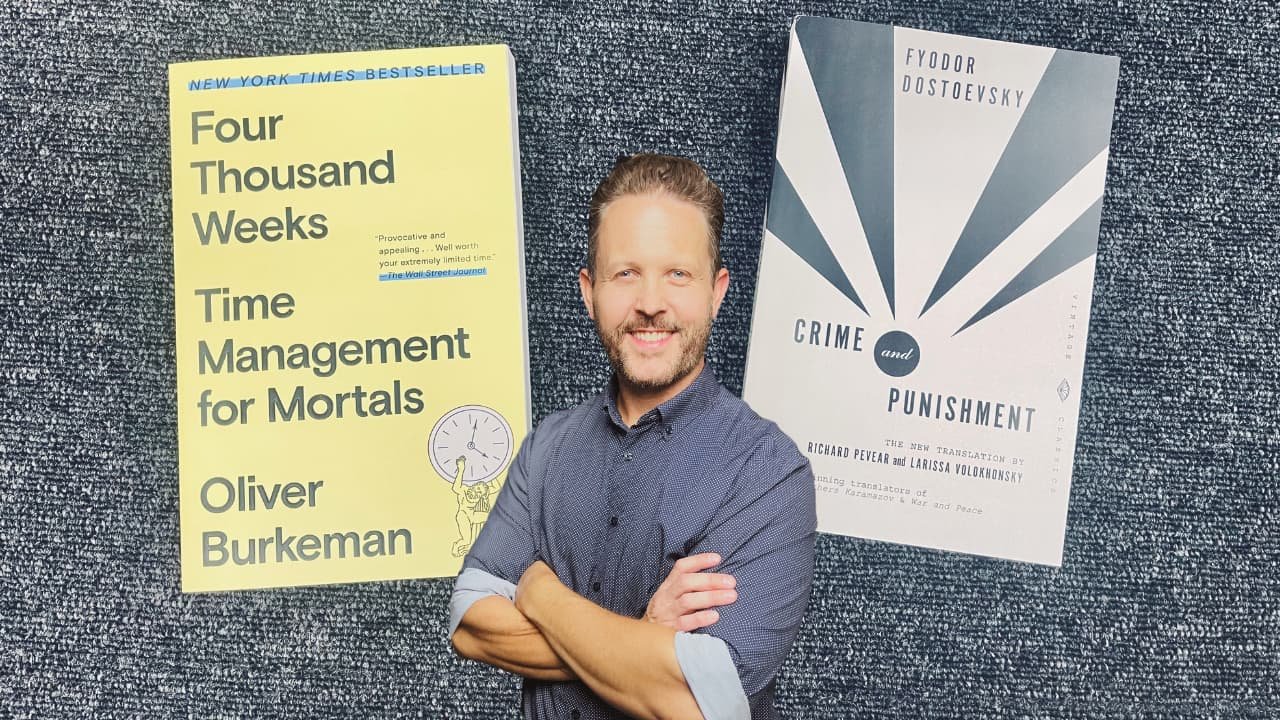Decide to Be a Note-Taker
Let’s assume you want to make notes when you read. How should you go about doing it? First off, it’s important that you decide to take this venture seriously. No more casual notes on loose sheets of paper or random ideas saved to your phone. You need a system if you’re going to start learning deeply from your books.
But there are problems with taking notes.
First, you don’t have a reliable place to keep them, making you anxious about the entire process. You begin to worry that putting in the effort isn’t worth it because you’ll lose the note, so what’s the point?
Second, you don’t know how to make a good note. You took notes in school, but that was ages ago, and now you’re out of practice. Well, here’s the bad (and good) news – the way you took notes in high school and college likely won’t help you.
It’s time to learn a better way.
Note-Taking for Fiction is Different Than Non-Fiction
Making notes from a fiction book is different than a non-fiction book. Yes, you can take Harry Potter or Stephen King notes. It is possible, and very beneficial.
I used to think taking notes “pulled me out of the story.” What I’ve found, for me, is that taking notes on a fictional work does the opposite – it pulls me in deeper, causing me to pay attention to things like character arcs. Going into student mode turns my brain on, and I get more from the story.
Not every book requires notes.
If you want to do more than enjoy the book at a surface level, then make notes. If you’re there for entertainment only, put the pen down and kick your feet.
Digital or Paper Notes?
Now that you’ve decided to take notes, should you keep them digitally or on paper? Only you can answer that for yourself. There are pros and cons to both systems. Think about how your brain works and pick the path that meshes with your learning style.
Digital notes are easier to search. You create a database of knowledge that grows in value over time. It’s easily portable and available as long as you have a power supply and an internet connection. The downside is that digital is less “personal.” It feels cold for many, and it becomes so efficient that you end up making notes you don’t need. The easiness of digital systems can lead to clutter, and as your notes get bloated, they get abandoned. Many a digital tool have been sent to the internet graveyards. Trust me, I know.
Paper notes feel good in the moment. They force you to slow down, think as you write, and connect with the material. The problem, of course, is that you can’t easily search the notebooks later for ideas unless you remember exactly what you’re looking for. It’s harder to create a network of knowledge on paper, but it can be done.
The most important rule here is to not let the decision to go digital or paper create anxiety. Try both if you’re unsure. Over time, you’ll gravitate towards the system that works for you.
Get a Dedicated Notebook (Keep it Small)

I’m going to assume you’re taking the paper path. I’ve taught classes on digital systems, but I’ve come to love the paper system with a few tweaks. Below, you’ll learn how I keep my paper notes, what goes in them, and how I use them to think.
The first step is to get a dedicated notebook for each book that I am going to read. The notebook should be small and portable. I don’t have room on my shelves for these massive, leather-bound journals when it comes to book notes.
A separate notebook is necessary for organization. In the future, you’re going to want to return to the ideas of a specific book, and if those notes are comingled with notes from three other books in a journal you kept, along with your to-do lists, therapy sessions, and more – you’ll never return and benefit from those notes. You’ll also never be able to find them.
Get a small, dedicated notebook and write the name of the book you’ll be studying on its cover. Doing so gives you permission to use this notebook for a specific purpose. Once you declare a notebook’s purpose, you no longer have as much journal anxiety – the fear that you’ll ruin a notebook with dumb ideas, bad handwriting, etc.
🎉 I do have custom notebooks like the one in the picture above for each book I sell in my bookstore, along with a general notebook that you could apply to any fiction or non-fiction book. Those are available here.
Create a Color-Coding Legend
In the front of your notebook, create a color-coding legend. You’ll use it as a guide to keep your notes organized around key concepts. I’ve included my legends below for your reference.
Also, while we’re here, we should talk about writing in the book itself. Some people, including yours truly, are comfortable writing in the margins while others feel repulsed by the idea. The note-taking system will work either way, so try not to worry too much about it.
Here’s what I do, along with an option for those who do not want to write in the book itself:
Color-Coding Legend for Non-Fiction Books:
- Blue = Primary Argument
- Green = Supporting Argument
- Orange = Beautiful Passage or Quote
- Pink = Source that Needs Further Study
- Yellow = Passage I Disagree With

Color-Coding Legend for Fiction Books:
- Blue = Major Plot Point
- Green = Character Development
- Orange = Beautiful Passage or Quote
- Pink = Theme Development
- Yellow = Passage I Disagree With

When I read a book, I use my highlighters to draw a single verticle line down the inside of the paragraph. If I’m in a non-fiction book and I come across a primary argument, I get out my blue highlighter and draw a vertical line. If it’s a quote, I reach for the orange highlighter, and so on.
* If you’re not writing in your book, then skip to the next section but keep these color-coding legends handy. You’re still going to use them.
Give Each Highlight a Title
Then I grab a pen and write a title for that passage in the margin that summarizes what the passage is about. By giving my note a title, I do myself two favors. First, when I return to the note, I can quickly remember what it’s about rather than having to read the whole passage. Second, creating a title forces me to think about what I’ve read and why it matters.
Once the title is in the margins, transfer it to your notebook along with the page #. This is the beginning of a new note. Here’s an example: “Pip Kisses Miss Havisham’s Hand” – P.148
*If you’re not writing in your books, then start a new note in your notebook with the same format: Title – P.#

How to Analyze a Passage
Now that my book is highlighted, I’ve written a title in the margin, and I’ve transferred that title to my dedicated notebook – it’s time for some analysis.
Your instinct will be to copy the passage word-for-word in your notebook. Don’t do that. You can return to the book if you need the exact quotes.
Instead, your note should detail your reaction, ideas, response, or questions that the passage generates. It should be a place for you to grow as a thinker, not improve your transcription skills. This is where our high school and college note-taking skills fail us. We learned to transcribe with our notes, not use them to think critically.

Take Care of the Meta Notes
Once you’ve worked your way through the whole book, it’s time to answer a few questions. I like to write theses on the inside cover of my dedicated notebooks as a way to summarize important ideas:
- Why I decided to read this book
- 5 main lessons from this book I want to remember
- (If reading fiction): List of main characters to remember
Read the Book a Second Time and Refine Your Notes
You’re not done yet. The first time you read a book, you’re new to its ideas. You’re like a scout wandering through the woods, trying to discover new lands. As you climb its hills and weave through the valleys, every rock and leaf catches your attention. Because you’re new to the book, you don’t know what matters – yet.
After reading it once, you know the main arguments and ideas. If this is a book you want to learn, then read it a second time. As you do, I guarantee you’ll learn 10X more than your first time through. You’ll be ready for the big ideas and can analyze them for what they are (and are not). And yes, I do read fictional books more than once if they have an important message. Fyodor Dostoyevsky’s Crime and Punishment is a great example. Every time I walk the streets of St. Petersburg with Raskolnikov, I get more out of it.
This may feel like a waste, especially in a world that’s teaching you to hustle and do more. Many people brag that they read huge quantities of books each year. How can this be possible if I’m suggesting you read them more than once? It’s likely not. And that’s OK. We’re not here to consume large quantities of books, we’re here to understand the really good ones.
Come Back to Your Notes After 90 Days
After you’ve read the book a second time, come back to your dedicated notebook in 90 days. The best tip here is to schedule this meeting with yourself. Put a time on your calendar to sit for one hour and read your notes. You’ll be amazed at how much you’ve forgotten, and how quickly it all comes back. You’ll also remember ideas you wanted to implement, and now that the dust has settled, you’ll be better able to do so.
Wrapping Things Up
Taking notes is an active process. That’s why the first step is deciding to take this seriously. You can try to take notes casually, but if you’re like me, you’ll get frustrated and give up over time. Until you have a real system in place, it’s hard to trust the process of learning. Once you decide to take your books deeper with a real note-taking system, you’ll no longer feel guilt that you’re missing important ideas. I’ve been developing this system for over a year now. It’s not complicated, and that’s what I love about it. If you have any questions or suggestions to improve it, leave me a comment and we can learn together.

I have been trying to unsubscribe from this sight for some time now. Your website is very frustrating. I’m still receiving stuff in my email which I don’t wish to get. Please help
Me to unsubscribe. I’m not interested in seeing anymore about readwell
At the bottom of the emails there are links to manage notifications from the site or to unsubscribe from all emails.